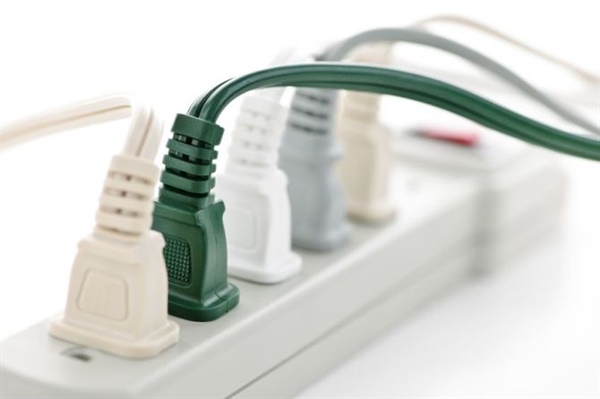How to Use a Surge Protector Safely

In modern times, electricity is an everyday part of life. Everything from our tools to our toys may need an outlet to work or charge. However, electricity has never been the safest thing to use.
While we have gained mastery and a complete understanding of how electricity functions over the 250+ years of harnessing it, we don’t always have control of our home electrical systems.
With so many items drawing energy, it’s imperative to know how to safely use surge protection in your home.
Ready to learn how to prevent power surges from destroying your home electronics and appliances with surge protectors? Keep reading this informative blog post from the experts at SoCal Electrical & Lighting.
What Is a Power Surge?
A power surge happens when the flow of electricity is interrupted then started again, pushing electricity back into the system – kind of like causing an electrical traffic jam throughout your home.
Power surges can not only damage expensive electronics but also cause a fire in your home. It takes a split second for them to happen, but can have lasting impacts. Using a surge protector correctly can help prevent this.
In case you didn’t already know, power surges also go by the name power spikes and “transients.”
What Is a Surge Protector?
A surge protector, also known as a surge suppressor and spike diverter, is a device that plugs into your electrical outlets to protect your appliances from frying out from power surges.
Despite surge protectors plugging into one outlet, they often have more than one outlet. Surge protectors with more than one outlet are called power strips. Many surge protectors have a switch that stops the flow of electricity to its outlets.
The most important component in a surge protector is the circuit breaker. Circuit breakers prevent current spikes and stabilize your outlet's electrical output, ensuring your electronic devices don’t burn out. Circuit breakers prevent short-circuiting and overcurrents.
When Should You Use a Surge Protector?
If you have lots of appliances or electronics plugged into your outlets, it is time to purchase a few surge protectors for around your home. Ideally, any outlet with a TV should have a surge protector. Console and PC gamers, programmers, 3D modelers, video editors, and remote employees should have surge protectors set up around their workstations or offices.
In general, if you want your appliances and electronics to last longer, get into the habit of using surge protectors because you’ll never know when there’ll be an electrical surge.
Know Your Amount of Joules
When getting a surge protector, it’s best to know what the joule limit is and what joule output your appliances run at. For instance, An average A/C runs between 1,000-2,000 joules.
Getting a surge protector to outmatch the amount of power you’ll be running through it is a good idea.
DON’T OVERLOAD
Related to the previous section. Loading your surge protector past its limit can cause tripped circuit breakers or even fire.
Most power surges are internal, while only some may come from outside culprits such as a tree falling on a power line. So if you have an abundance of things to plug in around the same area, it’s best to do some planning and allocate your energy better.
And, as always, overestimate the number of joules you’ll need
Know Plug-In Sizes
From small lamps and TVs to electrical car outlets, there are many different sizes of plug-ins. Don’t try and force a three-prong plug-in into a two-prong outlet, as that greatly increases the chances of a power surge or fire.
Know When to Replace
Like any appliance or tool, surge protectors have a life cycle. When a surge protector’s life ends, it won’t be able to protect your electronics from a potential power surge.
To determine your surge protector no longer works, look for the green LED light on the front side. If the light is no longer green, then it’s time to replace your surge protector.
Don’t Daisy Chain Surge Protectors
When you see surge protectors lying around your home, you may get the odd urge to link them all together to create an extra-large power strip. While this idea is a bit amusing to think about, it is actually unsafe because it can overload your circuit breaker, starting a fire.
Call an Electrical Professional Near Coachella Valley
If you’re uncertain your surge protector is working properly, or you fear that your electrical system may have some faults, call on the professionals at SoCal Electrical & Lighting.
Electrical troubleshooting is one of our many expertise and we’ll be more than happy to help with all your electrical and lighting needs! Contact us online or call us at 760-699-2686.